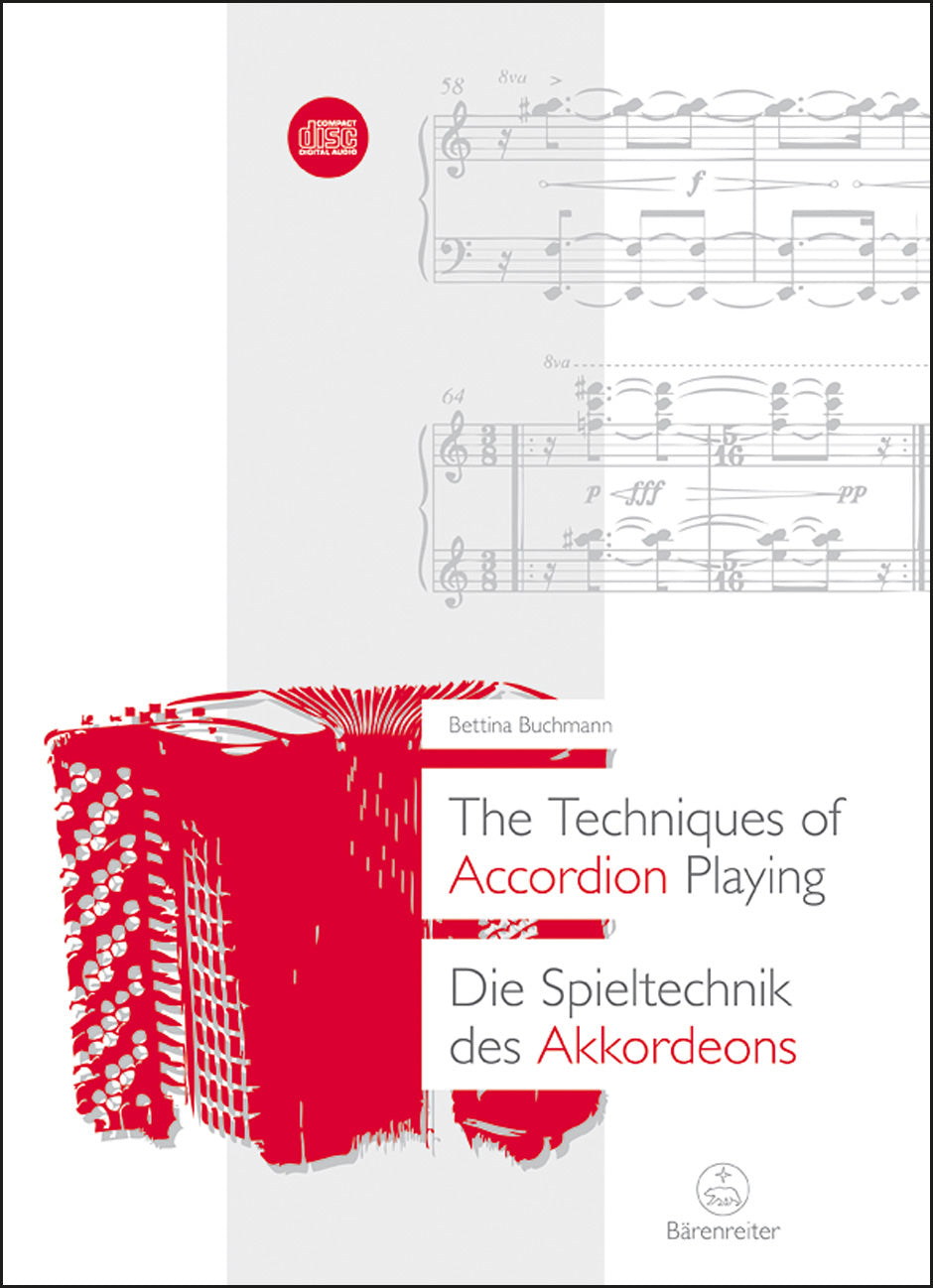The Techniques of Accordion Playing
In stock and typically ships within 1 business day.
- Author: Bettina Buchmann
- Format: Book & Audio Access
- ISBN:
- Size: 8.3 x 11.4 inches
- Pages: 121
Description
In view of the enormous upswing in popularity that the accordion has experienced as an avantgarde instrument in the last decades of the twentieth century, a systematic elaboration of the latest instrumental techniques and forms of expression, as well as detailed instructions on how to employ the accordion have been sorely lacking. This book explains all the playing techniques, registers as well as tonal potentials and expressive possibilities of the accordion. It demonstrates the distinctive elements of these techniques and in addition, gives composers valuable information concerning notation. A CD with examples of sound techniques and excerpts from the repertoire is included. An extra fold-out chart presents a full-sized layout of the treble and bass sides, helping composers to check fingering possibilities. This long-awaited book will be an essential tool for composers, performers and teachers. - Comprehensive description of all relevant playing techniques on the button accordion - Practical notation suggestions for composers - Music examples from important contemporary works - CD containing examples of all registration and playing techniques and excerpts from the repertoire - Full size, fold-out chart giving the arrangement of the buttons on the instrument.
Publishers use a lot of words to describe what they sell, and we know it can be confusing. We've tried to be as clear as possible to make sure you get exactly what you are looking for. Below are descriptions of the terms that we use to describe the various formats that music often comes in.
Choral Score
A score for vocalists that only contains the vocal lines. The instrumental parts are not there for reference. Generally, cheaper than a vocal score and requires multiple copies for purchase.
Facsimile
Reproductions of the original hand-written scores from the composer.
Full Score
For ensemble music, this indicates that the edition contains all parts on a single system (there are not separate parts for each player). In larger ensembles, this is for the conductor.
Hardcover
Hardbound. Generally either linen-covered or half-leather.
Orchestral Parts
Similar to a wind set, this is a collection of parts. In the case of strings, the numbers listed are the number of copies included, though generally these are available individually (often with minimum quantities required).
Paperback
When publishers offer multiple bindings (e.g. hardcover) or study scores, this is the "standard" version. If you're planning to play the music, this is probably what you want.
Performance / Playing Score
A score of the music containing all parts on one system, intended for players to share. There are not separate parts for each player.
Set of Parts
For ensemble music, this indicates that there are separate individual parts for each player.
Solo Part with Piano Reduction
For solo pieces with orchestra, this is a version that contains a piano reduction of the orchestra parts. For piano pieces, two copies are typically needed for performance.
Study Score
A small (think choral size) copy of the complete score meant for studying, and not playing. They make great add-ons when learning concertos and small chamber works.
Vocal Score
A score prepared for vocalists that includes the piano/organ part or a reduction of the instrumental parts.
Wind Set
For orchestral music, this is a collection of wind and percussion parts. The specific quantities of each instrument are notated.
With Audio
In addition to the printed music, the edition contains recordings of the pieces. This may be an included CD, or access to files on the internet.
With / Without Fingering (Markings)
Some publishers prepare two copies - a pure Urtext edition that includes no fingering (or bowing) suggestions and a lightly edited version that includes a minimal number of editorial markings.



